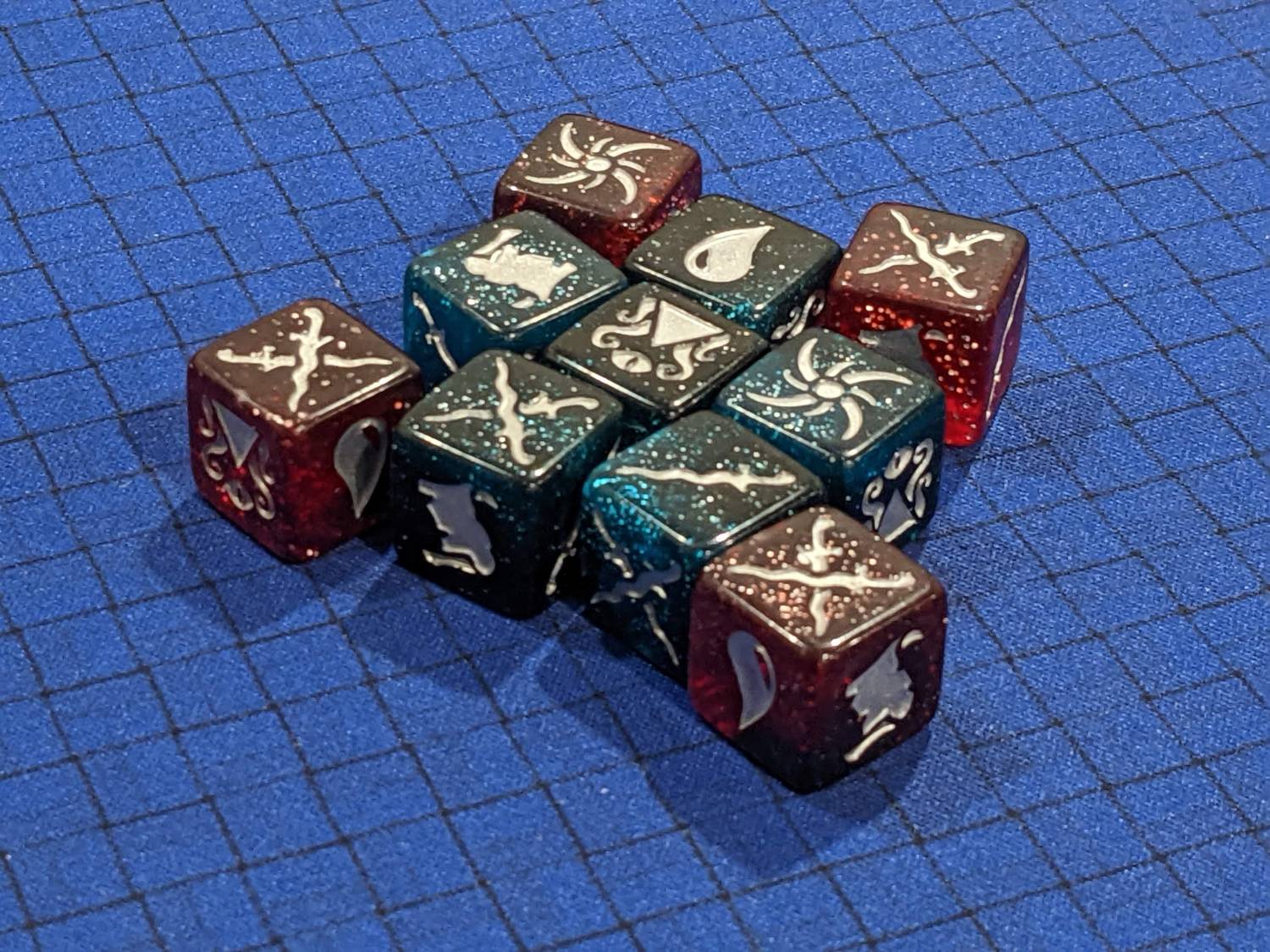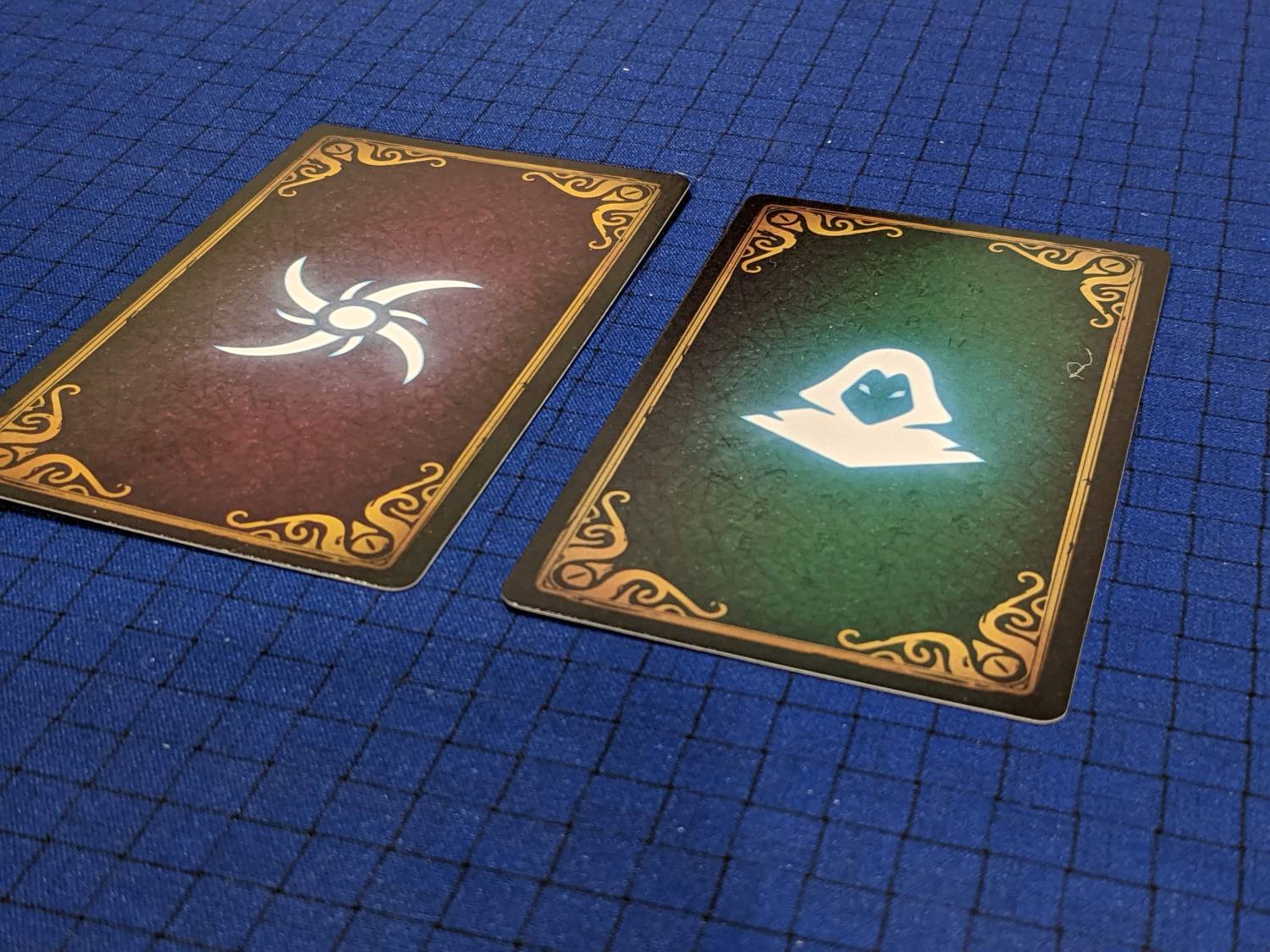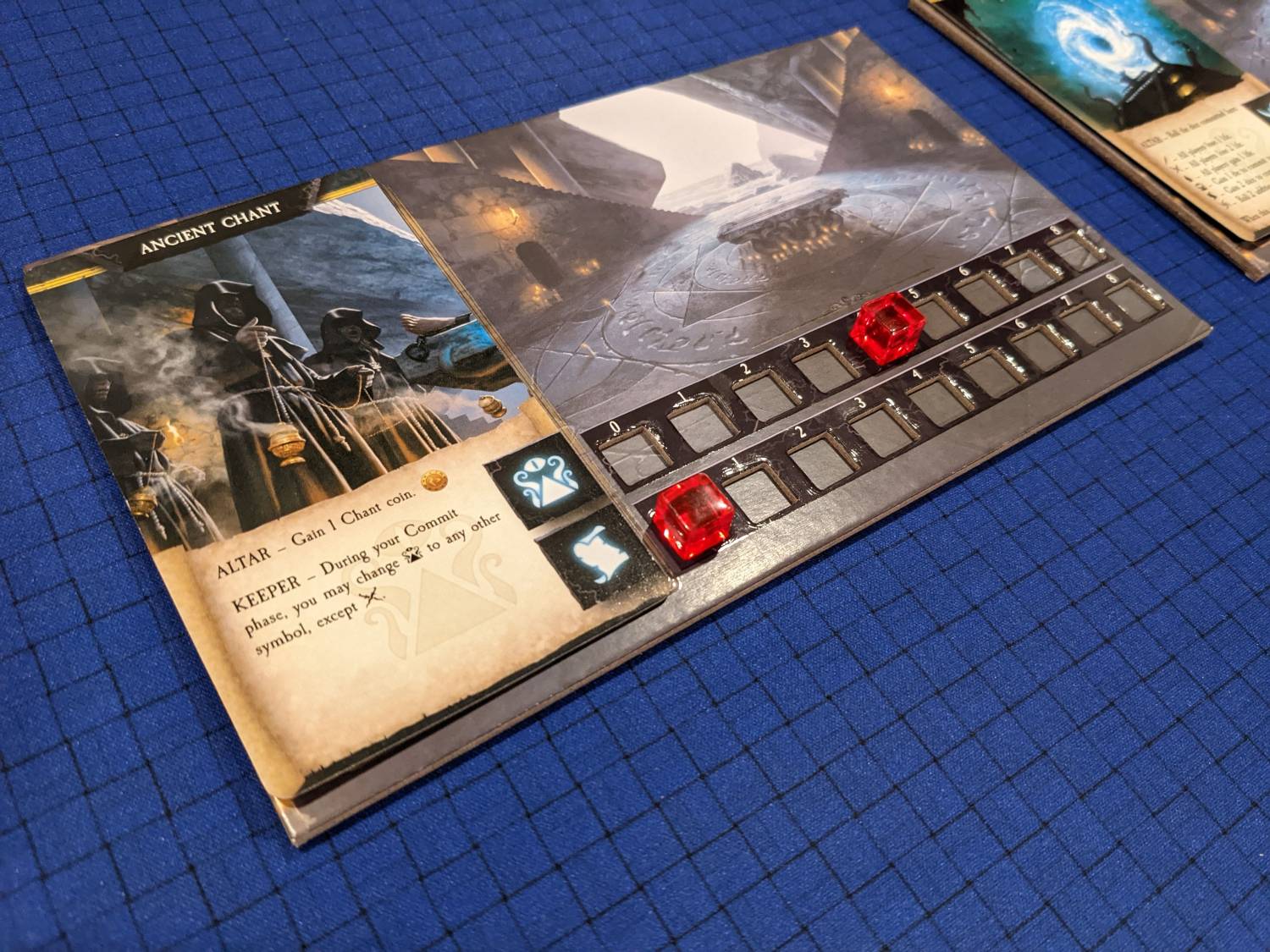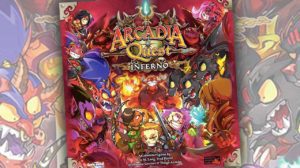Disclosure: Meeple Mountain received a free copy of this product in exchange for an honest, unbiased review. This review is not intended to be an endorsement.
Bang! The Dice Game (2015, dV Giochi) is very clearly an inspiration for Cult of the Deep (2022, BA Games), especially if you have played both games and recognize the biggest shortcoming of Bang!:
If you are murdered, you’re out of the game and get to watch everyone else play without you.
Now, in Bang!, it sucks to die early. My only two games featured me dying off first. But that is countered by the fact that the game is so short, ending in about 15 minutes.
What if I offered you the chance to play a single game of Bang! for two hours?

It’s Taking FOREVER to Kill That Guy!
Cult of the Deep is a hidden role dice game. Like Bang!, you’re dealt a card that tells you who you are: the High Priest, the Faithful, a Cabalist, or a Heretic.
If you are the High Priest, your role is public, and almost everyone else is trying to kill you. If you’re the Faithful, you’re trying to keep the High Priest alive. Cabalists want the High Priest dead, but they’ll settle for killing both the High Priest and the Faithful, while the Heretic wants everyone else to die, even if it means dying themselves.
So that’s your story. Your role is hidden (well, unless you’re the High Priest), but you’ve got a Character card face-up in front of you that provides a minor ongoing power, plus a Sigil card that gives you a one-time game-breaking power, most of which are actually pretty awesome. There are rituals (event cards) that need to be addressed as well, with 3-4 of them always available that may grant small bonuses and better ongoing powers if you’re the player to complete it.
The thing you have more of than anything else, though, is also the game’s downfall: tons and tons of life tokens.
Most players will begin a game of Cult of the Deep with 15-20 life tokens. Worse, you can always take on more health than your Character’s top limit should be able to hold. (The closest thing I can approximate to this is the fact that in the video game Quake, you could have 200% health.)
That means on the first turn of the game, a sensible player who begins play with 17 life tokens will roll their five very handsome Cultist dice and try to add health to their topline right away. They might choose to damage another player—as a Cabalist, that’s technically the job if you are openly attacking the High Priest—but because you can hoard life tokens, you’re going to do that a couple of times every turn.

Oh Boy
Cult of the Deep has some massive problems right out of the gate. Let’s begin with the playtime: the box lists that games will last 45-60 minutes. This is a bald-faced lie; my only four-player game (which is a variant that includes a script run by the players for the High Priest Character, and not recommended) took an hour. Other games ranged from 90 minutes all the way to an aborted play just short of two hours with six players.
There just isn’t enough to do in Cult of the Deep to warrant a longer sit, but the problem then heads off in two different directions.
First, this should be a direct combat game with hidden motivations. Everything should be tied to attacking. But the ritual boards provide too great a distraction for where the game wants to go (my opinion, obviously, but I’m surprised this didn’t surface in playtesting prior to release). As a result, lots of players will use die results to try and complete rituals, instead of trying to roll dagger and/or double dagger die faces to damage other players.
Some of the ritual cards use the double dagger as a way to trigger powers on the rituals, and players often assign double dagger die results there instead of just trying to damage their (not publicly sworn) enemy.
Second problem: the roles will only stay hidden for a round or two.
In Bang!, if you are the Deputy, you are going to try to keep your Sheriff alive. In Cult of the Deep, the Faithful only has one job, and that’s to keep the High Priest alive. Even trying to protect the High Priest once puts a target on the Faithful’s back and then the game turns into an open attack on those 2-3 players in each game: the High Priest and the Faithful. (At 5-6 players, there are two Faithful; at 7-8 players, there are three Faithful.)
So, even though Cult of the Deep is a hidden role game, I have found it to be a hidden role game for only the first 25% of the game. After that, it’s usually clear who the good guys are, which only leaves the question of who the Heretic is (since everyone else is a bad guy).

The Cult’s Obsession is Production
Now, I’ll give Cult of the Deep this much: it’s a good-looking game, and priced well for what comes in the box. It also avoids the major issue I have with Bang! by allowing eliminated players the chance to return as a Wraith to take turns and still get a chance at redemption if they can meet their win condition.
The 30 dice included in the game look good. The backs of the cards, with little watermarks and sleek icons, look good. The insert is perfect, and the ritual boards do the job. I wish BA Games had sprung for extra artwork and Character cards—Assassin and Assassin II?—but I’ll allow this because the player aid is so good.
A negative about the Character cards: why are some Characters better than others with the same name? We had a couple of games in my groups where copies of the same Character appeared, and it feels like each pair has one card that is a little better than the other. There are 19 Character cards but these should all be different, right?

Stay Hidden
Cult of the Deep has some real highs and lows.
I prefer games like this over games like Bang! because there is more going on, and if you die during play, you’ll come back as a Wraith and still have a chance to win the game as long as you are not the High Priest. (If that role is killed off, the game ends immediately.) Plus I love dice, and there’s a little more meat on the bone than something like Bang!.
On the other hand, the massive running time of Cult of the Deep makes play go stale quickly.
At one point in a game of Cult of the Deep, you WILL look around the table, see six or seven other players with 15+ health, and realize that you might have a chance to do two, maybe three, points of damage to another character. Then that player will counter with a power that will lower damage to one point, or maybe zero. This will be 20 minutes into the game, then you’ll realize that everyone knows who everyone else is and you’ll just be working to stay interested in a game that will run a heck of a lot longer than 45-60 minutes.
The four-player variant is a miss, so you’ll need at least six players to get a sense of what the game’s designers were going for. I have not played Cult of the Deep at seven or eight players, but if you have a group that large, you are moving into Werewolf and/or Blood on the Clocktower territory for a hidden role game. Both of those games do a better job of keeping everyone engaged.
If hidden role games are your thing, I would find Cult of the Deep on the secondary market in a year or two to give it a whirl. In the meantime, save for its stellar production elements, you will find more engaging products in this space.












